How to properly store pomegranate at home
Pomegranate is a seasonal fruit, also imported. In our country, supplies are made from warm countries, where crops are harvested from September to January. In this article, we will tell you in what form to store pomegranates so that they stay fresh longer, and how to do it correctly.
The content of the article
Features and basic rules for storing pomegranate
The main principles of proper storage of pomegranates:
- fresh fruits require a moderate level of humidity, ventilation, and a stable temperature regime;
- it is better to freeze in a vacuum package, it is desirable to store in this form for no more than a year, and defrost slowly;
- keep canned food in a cool place away from direct sunlight;
- store dried berries in a dry and dark place.
Selection and preparation of fruits
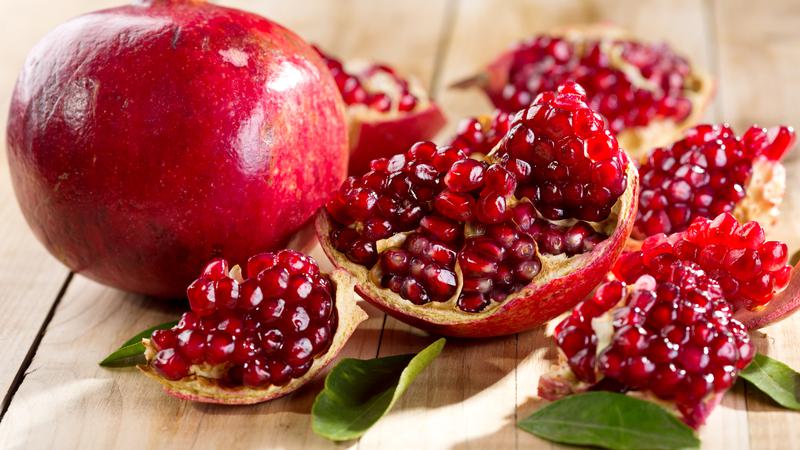
To keep the fruit at home as long as possible, you need to carefully choose the fruit.
The optimal time to buy for future use is from November to January. It was during this period that the largest selection of imported fruits.
The pomegranate must be ripe. An early plucked fruit is not always able to ripen, which means that its taste will be far from expected. External factors of fruit ripeness:
- there should be no greenish areas in the inflorescence area, the crown itself looks dryish;
- the peel is slightly dry with a slight gloss and looks as if it covers the grains;
- when pressing on the surface, a slight crunching sound is heard.
The skin color of different pomegranate varieties varies from greenish-yellow to burgundy. The color of the grains is varied: from almost transparent, like glass, to dark ruby.
The selected fruits should not have any traces of rot, damage to the skin, brown or brown spots, crumpled sides.
If the pomegranate is soft, most likely, it is slightly frozen, rotted on the inside, or damaged during transportation.
For storage, fruits with a diameter of 8-10 cm are chosen, dense, juicy and heavy - up to 500 g each.
It is interesting:
How to eat pomegranate (with or without seeds)
How to store pomegranate properly
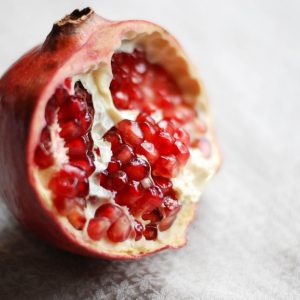
In order to preserve the taste and useful qualities of the fruit, it is important to provide it with optimal conditions:
- constant temperature within + 1 ... + 2 ° C;
- good ventilation;
- humidity level within 80%.
Under these conditions, the fruit remains fresh for several months.
Attention! At + 1 ... + 2 ° C, sour varieties are stored for up to 9 months, and sweet ones - up to 5.
Where to store
It is difficult to maintain a constant temperature close to zero. But depending on the state of the fruit, their storage in general or processed form, as well as the purposes of further use, different places are chosen:
- balcony;
- cellar or basement;
- refrigerator;
- freezer;
- room.
What to store
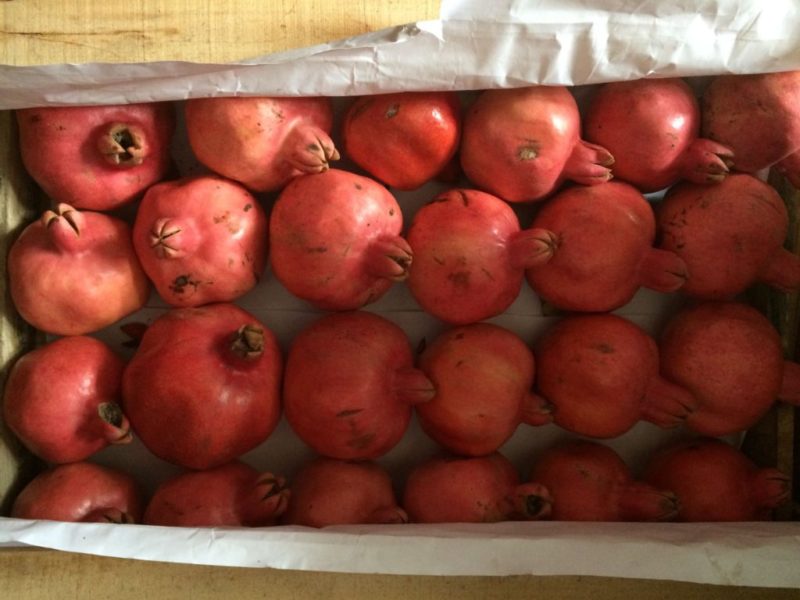
The pomegranate seeds are very juicy and the dense skin prevents moisture from evaporating. To further slow down the dehydration process, there are ways to:
- Pour clay diluted to thickening sour cream into the crown (place of inflorescence). After waiting for the solution to dry, send it to storage. Crust will gradually dry out, but the grains will remain juicy. This method allows you to increase the storage period of fruits in a refrigerator or cellar up to 4-5 months, while without clay, the shelf life is limited to 2 months.
- Wrap each fruit in paper. It will not only slow down the process of moisture evaporation, but also prevent rotting. Change paper as it gets wet to prevent rotting or mildew.
Storage methods
Depending on the purpose of further use, the product is stored in different forms.
Wholly
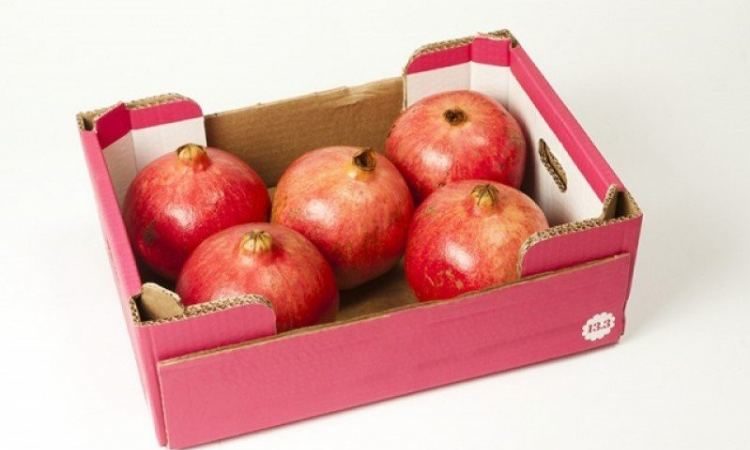
If you enjoy eating fresh grains, keep them whole in the refrigerator, loggia, pantry, or basement.
You can also freeze the whole fruit, and after thawing, use it to prepare meals or squeeze juice from it.
In the form of grains
If you plan to use the grains in the next 1 to 2 days for eating, adding to salads, baking or decorating dishes, prepare them ahead of time and store them in the refrigerator.
If the pomegranate is tainted and had to be peeled, you can store the berries for a longer period in the freezer.
In the form of juice

Pomegranate juice is delicious on its own. It serves as a base for preparing mousses, jellies, sauces and other dishes. Store both freshly squeezed and sterilized juice. Storage methods and periods vary.
Features of storage of peeled and unpeeled fruits
At room temperature and in the refrigerator, whole fruits last better and longer than peeled grains... Peel off immediately before use.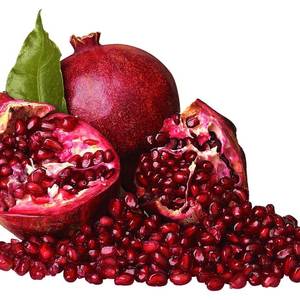
For storage in the refrigerator or on the balcony, it is optimal to choose large fruits so that they lose moisture more slowly. If the pomegranates are different sizes, store the large ones separately from the medium ones, and use the small ones as soon as possible or freeze them.
In the freezer, the fruit, both as a whole and disassembled, is stored for an equally long time. Whole fruits are washed only if necessary. It is enough to wipe them dry with a towel. It is better to freeze small or medium-sized specimens so that the freezing process goes faster and more evenly.
To save space, place already cleaned grains in the freezer. It is not recommended to wash them. For convenience, immediately place them in portioned bags or containers.
Important! Defrost the pomegranates slowly, preferably on the top shelf in the refrigerator. So the fruit will keep beneficial features and will not flow. Re-freezing is not allowed.
Recycled storage
Pomegranate is consumed not only fresh. Juices, wines, syrups, preserves, sauces, marshmallows are prepared from it, added to seasonings.
Drying

The popular Indian condiment is created by taking grains dried in the sun for a week, which are then fried and ground. The spice is often supplemented with dry, ground pomegranate rinds. This seasoning is called anardana. It is added to any vegetable and bean dishes, and kebabs are marinated in it.
Important! Pomegranate peels contain more nutrients than grains. In India and Central Asia, sauces, spices, tinctures are made on the basis of powder from dry peel and are actively used in folk medicine.
Freezing
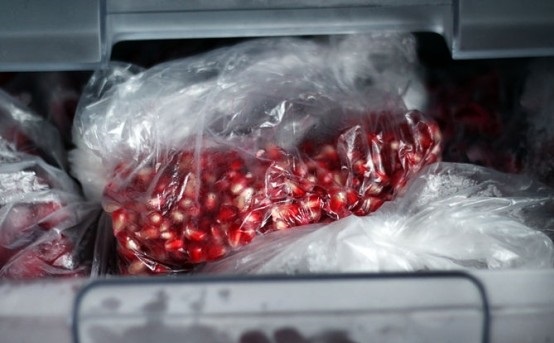
You can freeze the whole fruit, its grains or squeezed juice. To do this, a whole pomegranate or grains cleaned from films are enough to place in a zip bag and remove excess air from there. And the juice is frozen in disposable ice molds and taken out as needed for making sauce, compote, ice cream, jelly or marshmallows.
Reference. Vacuuming contributes to better preservation of products, prevents the appearance of "snow" when frozen. The air is removed from the zip bag with the contents, gradually lowering it into the water. It squeezes out the remaining bubbles, after which it remains to carefully close the zip and dry the surface of the bag.
Canning
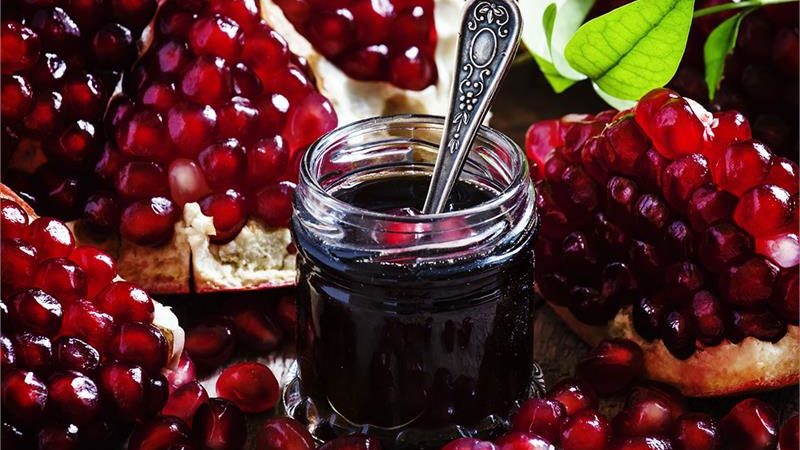
Long-term storage products are jams, preserves, syrups, sauces and compotes. While receiving gastronomic pleasure, you simultaneously saturate the body with vitamins, minerals and amino acids, which the fruit is rich in even after heat treatment.
Attention! If you've got a sour pomegranate, you can use the evaporation method to create a rich, viscous and aromatic narsharab sauce - an ideal seasoning for meat and fish dishes.
Storage periods
The period during which the fruit retains its beneficial qualities and rich taste depends on temperature, humidity and ventilation. In the absence of moisture, temperature is the decisive factor.
How much pomegranate can be stored at different temperatures:
- from -15 to -24 ° C - up to 1 year;

- from +1 to + 2 ° C - from 5 to 9 months (for sweet and sour varieties, respectively);
- from +4 to + 8 ° C - up to 2 months;
- from +18 to + 25 ° C - 7-14 days.
How much shelled grains are stored:
- from -15 to -24 ° C - up to 1 year;
- from +4 to + 8 ° C - up to 4 days;
- from +18 to + 25 ° C - 1 day.
Freshly squeezed juice is stored at temperatures from +4 to + 8 ° C for up to 3 days.
Sterilized juice, compote, jam, syrup or boiled sauce:
- from +4 to + 8 ° C - up to 1 year;
- from +18 to + 25 ° C - up to 6 months.
Dried pomegranates are stored at temperatures from +18 to + 25 ° C for up to 1 year in a dark, dry place in a sealed container or tight paper bags.
Important! If you store whole fruits in the refrigerator, on the balcony or in the cellar, inspect them regularly. If there are signs of spoilage, peel the fruit, remove damaged and rotten parts, process or freeze.
Useful Tips
The following tips will help keep pomegranates fresh longer:
- Wrap the fruit in parchment to keep it juicy and prevent moisture from rotting.
- Arrange the pomegranates in one layer in the drawer. This will provide ventilation, uniform humidity and easier access for monitoring conditions.
- Avoid sudden temperature changes or drops to 0 ° C.
- Check stocks regularly to identify fruits that have begun to deteriorate and remove them in time.
- Store fruits of different sizes separately.
Conclusion
It is in our power to stock up on the whole family tasty and healthy fruits and preparations until the next harvest. The main thing is to provide them with air circulation, optimal temperature and humidity. This requires very little effort, but it will significantly enrich the diet and diversify the table, which is especially important in early spring, when the body is lacking vitamins.